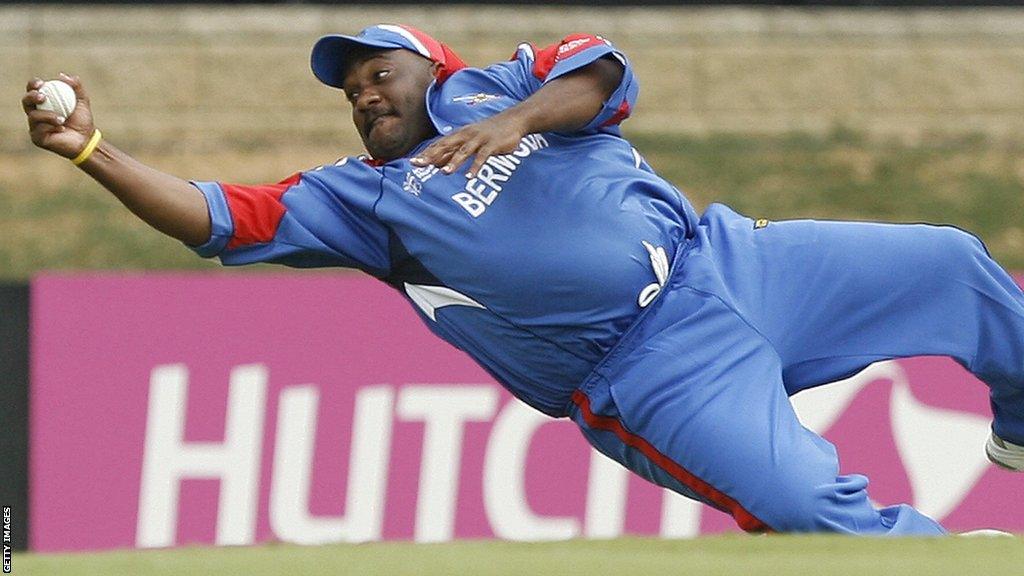Cricket World Cup: The changes needed to revitalise the tournament - Steven Finn column
- Published

This World Cup has shown glimpses of what could have been.
Not from an England perspective but, in a world game that is dominated (financially) by the big three of England, Australia and India, we have had hints of romantic stories that would have been amazing to witness.
The format of this tournament, with 10 teams, has meant that those amazing feats have been nullified and from at least halfway through the 45-game group phase, we have known who three of the semi-finalists would be.
That is not right.
Afghanistan have played so well to win four games in the group stage, against England, Pakistan, Sri Lanka and the Netherlands.
There is absolutely no way they should not be playing a knockout game after those results.
There is also not enough peril for teams losing games.
A World Cup is meant to come with pressure. That is what truly tests teams and sorts out who is the best.

Dwayne Leverock famously produced a stunning one-handed catch to dismiss Robin Uthappa in the 2007 World Cup
Fourteen teams in the 2027 edition will be a welcome change.
Some of the most iconic moments in World Cup history that I can remember have come from the perceived 'smaller teams' - Ireland beating England in 2011, Dwayne Leverock's catch in 2007 for Bermuda against India, Ireland knocking Pakistan out in the same tournament and Kenya beating West Indies in 1996.
Kenya all-rounder Steve Tikolo was one of my favourite players as a result of him playing in World Cups.
If I'd have been able to find a replica Kenya shirt I'd have almost certainly begged my parents to get me one.
Instead, I opted for an Australia one in 1999 with McGrath on the back but we won't dwell on that.
So, how do we make the next World Cup more interesting and to stop it meandering towards an inevitable conclusion?
Firstly, I think the format should be changed to 40 overs-a-side with eight overs of powerplay and one ball used for the entire innings.
This will narrow the margin between teams and provide us with more close games.
I have been here in India for six weeks and I have not covered one tight game in this entire World Cup.
I was not at Australia's dramatic win over New Zealand, South Africa's one-wicket victory against Pakistan or Glenn Maxwell's epic rescue act for Australia against Afghanistan.
Those were exciting contests but we need more.
An eight-over powerplay provides ample opportunity for batters to make the most of the fielding restrictions and after that I would revert to five fielders outside of the 30-yard circle for the remainder of the innings, rather than the period of four we now have.
As a former bowler, I find nothing more dull than watching a ball that is not moving off the straight disappearing miles over the ropes multiple times an over.
We currently use two balls, one from each end, in 50-over cricket but returning to one for the entirety of an innings would at least throw the bowlers a bone by allowing the balls to be old enough to reverse swing.
Some of the most fascinating passages of play in history have come when the ball is reversing.
Who can forget Wasim Akram getting Allan Lamb and Chris Lewis out with magical reverse swing bowling in the 1992 final?
In the right conditions, bowlers should be able to take advantage of that.
However, as we've changed the format to 40 overs a side, the ball will remain hard on most surfaces and batters should still be able to whack it - negating one of the main reasons the two balls were introduced.
I would also be stricter in imposing the fielding penalties of an extra man inside the circle if teams are too slow in bowling their overs.
This is not me trying to help out the bowlers; it feels necessary to provide a more entertaining spectacle.
Maxwell hits astonishing double century to seal Australia win
Looking at the tournament more widely, I would also introduce a bonus-points system for the group stage.
Too often we have seen games meandering towards an inevitable conclusion with teams batting the overs to help their net run-rate and who can blame them?
A system that rewards attacking cricket should be implemented.
My way to do this would be to introduce a boundary count - and, no, that's not just because England won a World Cup based on one.
In my plan, a bonus point would be awarded if a team scored 35 boundaries in their 40 overs.
It would leave teams with a dilemma if they find themselves in a position where the game is slipping away - play attacking cricket and earn yourself a point that could become important when trying to qualify for the knockout stage, or dig in and hope for a win.
I would also give out a bonus point for teams who take six wickets by the 30th over.
This would encourage teams to continue to attack regardless of the game situation and encourage captains to err on the side of risk when setting fields, and bringing strike bowlers back before this cut-off time.
As for the format, with 14 teams the logical denomination is two groups of seven.
I would then progress to quarter-finals, semi-finals and a final with the top four from each group going through.
This would almost certainly mean that a team performing as Afghanistan have in this tournament would be playing knockout cricket and leave teams losing games dicing with danger with not as much chance of a reprieve.
Instantly it would be more interesting.
This may be slightly radical, but, I feel this is necessary if we are to help keep the format relevant by the time 2027 comes around.